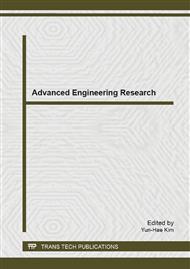p.900
p.905
p.909
p.913
p.917
p.922
p.927
p.933
p.942
Specifically Deoxyribozyme of the Protein Kinase C-δ Expression Treated in Human Hepatocellular Carcinoma HepG2 Cells
Abstract:
The tumor suppressor function of protein kinase C isoforms (PKC-δ) was evaluated by design and synthesis the 10-23 deoxyribozyme (DRz), thio-modified DRz (DRz-s) and antisense oligonucleotide (asON) of the PKC-δ genomic mRNA to detect the catalytic cleavage activity for tumor cells. Firstly, the cDNA fragment of PKC-δ gene was amplified from total cellular RNA of the HepG2.2.15 cells by reverse transcription PCR (RT-PCR). Subsequently, the fragments were cloned to pcDNA3.1(+) plasmids and generated a recombinant plasmids, then sifted the positive recombinant plasmids out to amplify. The expression vector of PKC-δ mRNA was obtained in vitro transcription by using T7 RNA polymerase. The results of transfection indicated that when PKC-δ mRNA gamyed with deoxyribozyme which activity disappeared, and DRz-s had more intensive specific catalytic cleavage activity than DRz by cells transfecting, but the asON wasn't detected with this activity.
Info:
Periodical:
Pages:
917-921
Citation:
Online since:
April 2014
Authors:
Price:
Сopyright:
© 2014 Trans Tech Publications Ltd. All Rights Reserved
Share:
Citation:


